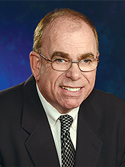
Seems like it is was only a few weeks ago that the New York Times was blasting the nursing home industry for playing fast and loose with staffing numbers. Now comes a state-by-state report card that essentially says chronic understaffing is undermining care.This latest examination by Families for Better Care, as Jim Berklan pointed out last week, doesn’t paint the entire field as suspect, but it makes no bones about what providers generally need to do: hire and schedule more front-line workers.
Families for Better Care rates states on eight quality measures. These are:
• Average professional nurse (licensed nurse and/or registered nurse) hours per resident per day
• Average certified nurse assistant hours (CNA) hours per resident per day
• Percentage of facilities with above average professional nurse staffing
• Percentage of facilities with above average direct care staffing
• Percentage of facilities with above average health inspections
• Percentage of facilities with deficiencies (in 2013)
• Percentage of facilities with severe deficiencies (in 2013)
• Percentage of verified ombudsman complaints (during the 2012 federal fiscal year).
After crunching the numbers, investigators concluded the best states for care were Rhode Island, Maine and New Hampshire. Conversely, care was rated lowest in Louisiana, Oklahoma, and -— worst of all -— Texas.
Brian Lee, executive director of the organization, said the obvious takeaway is that additional staffing translates into better care. “The difference between quality nursing home care and subpar care boils down to an average of 22 extra minutes of direct care per resident daily,” he noted.
That may not sound like much. But filling the gap may be easier said than done. Labor costs are far and away the largest single expense for nursing homes. Simply put, hiring more workers is going to drive up operating costs. And it’s not like Uncle Sam or residents’ loved ones are gladly lining up to increase the payments operators receive.
So it’s a bit of a Catch-22: Providers are being told directly or indirectly to hire more workers. Yet facilities should not expect additional support to deal with the additional costs that will result. As unfunded mandates go, this one is a pretty tough pill to swallow.
What are the takeaways for providers here? Actually, two come to mind.The first is that as we’ve said before, this sector can expect to feel more and more scrutiny from both the private and public sectors going forward.The second is that until the outside world feels that nursing homes are staffed adequately, demands for additional workers will continue.And we wonder why so many operators have just about had it?
John O’Connor is the Editorial Director at McKnight’s Long-Term Care News. Follow him @ltcritr.




